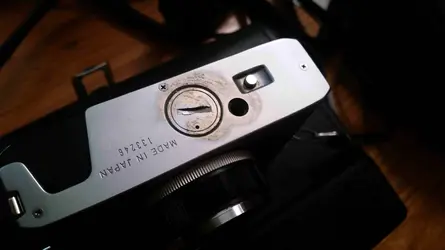Seamus42
TPF Noob!
- Joined
- Aug 19, 2018
- Messages
- 4
- Reaction score
- 2
- Location
- Massachusetts, US
- Can others edit my Photos
- Photos OK to edit
Hi all -- new forum member here, in search of some info. I just picked up what appeared to be a pristine Olympus 35 RC, only to realize later that I'd neglected checking the battery compartment. In short, it won't open. And there's also yellowish staining around the battery cover. I'm assuming this means an old mercury battery has burst inside the compartment.
So -- I've heard/read many differing opinions regarding the actual toxicity of mercury in batteries, but at the end of the day, I'm torn about whether to tackle this job. I'd be bummed about losing $30, but more bummed about ingesting/absorbing mercury. Anyone know about the safety of cleaning this corrosion? Any tips?
Thanks!
So -- I've heard/read many differing opinions regarding the actual toxicity of mercury in batteries, but at the end of the day, I'm torn about whether to tackle this job. I'd be bummed about losing $30, but more bummed about ingesting/absorbing mercury. Anyone know about the safety of cleaning this corrosion? Any tips?
Thanks!


 Shows you how long it's been since I mucked about with this gear; I totally forgot about the nickel trick. Yes, go with Derrel's suggestion on this; MUCH easier than customizing a screwdriver.
Shows you how long it's been since I mucked about with this gear; I totally forgot about the nickel trick. Yes, go with Derrel's suggestion on this; MUCH easier than customizing a screwdriver.











